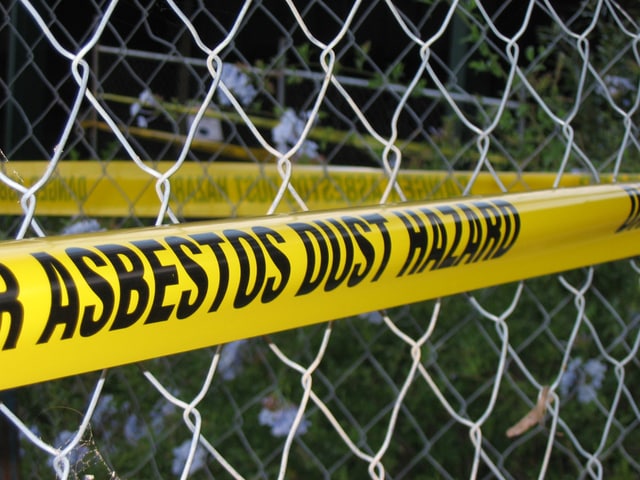
It’s a familiar refrain you hear from people who are unhappy with their jobs: “I’m so sick and tired of working here.” But some people, even those who absolutely love what they do, might eventually find themselves saying something else: “Working here is making me sick and tired.”
Occupational hazards can occur in virtually every line of work. From life-threatening altercations between police officers and criminals, to the increased risk of post-traumatic stress disorder in first responders, to repetitive stress disorder administrative staff may develop. The effects of these workplace hazards can be immediate or develop over some time, but few are as insidious as the effects of asbestos exposure and mesothelioma.
In this blog post, I review how regular exposure to asbestos can cause ill health effects, how the exposure occurs more frequently in certain professions, and what to do if you believe you’re at increased risk of mesothelioma or have already been diagnosed.
Asbestos: The Hidden Killer
Asbestos is a group of naturally occurring fibrous minerals that was often used in a variety of building materials or automotive and machine parts during much of the 20th century. The substance was popular due to its durability, flexibility and resistance to fire, heat and chemicals, but as asbestos miners and other people living close to these mines started to develop many health problems, the drawbacks of this carcinogenic mineral became very apparent.
When inhaled or ingested, these carcinogenic fibres can become caught in lung tissue or the gastrointestinal tract indefinitely, causing abnormalities such as pleura, asbestosis, and a variety of cancers including, most seriously, mesothelioma.
Mesothelioma, a form of cancer that has been directly linked to asbestos exposure, causes malignant tumours to develop on the mesothelium, a thin protective lining found on the lungs, stomach, heart or testicles. Symptoms vary, but commonly include chest pain and shortness of breath.
It’s difficult to reliably distinguish asbestos-containing materials with the naked eye, and virtually impossible to see the fibres if they become disturbed and airborne. This can make protecting yourself from exposure rather difficult.
An Occupational Hazard
While asbestos exposure can happen anywhere – even in your own home – people working in certain occupations are at an increased risk of being exposed to these fibres on a repeated or extended basis.
These jobs include:
- Demolition and construction workers: bulldozer and crane operators, brick and stone masons, tile setters, cabinet makers, carpenters, plumbers, drywall tapers, HVAC workers, electricians, insulators, painters, plasterers, roofers and general contractors all often work for lengthy periods in environments where old asbestos products are breaking down, disturbed or removed.
- Hazardous material inspectors: Home inspectors, hazardous material testers, and asbestos removal and remediation workers may be more likely to know about their chance of being exposed, but their close proximity to the material and risk of improper training increases their risk of regular and sustained exposure.
- Mechanics and millwrights: automotive, aircraft or heavy equipment mechanics working on asbestos-containing parts such as brakes (linings, blocks, or pads), clutch facings, gaskets, or transmission components among others are at increased risk of exposure both to asbestos fibres they touch when working on worn down parts, and the dust that results.
- Metalworkers: blacksmiths, welders, metal lathers, and sheet metal workers/tinsmiths often work near fire or intense heat and may have been exposed to asbestos products used as fire retardants or insulators.
- Industrial plant workers: furnace/smelter operators, oil refinery workers, mixing operators, and molders all work in positions where they are at increased risk of breathing in asbestos dust regularly.
- Firefighters: an exceedingly dangerous occupation due to fire, smoke inhalation, and carbon monoxide poisoning, firefighters may also regularly be in environments where asbestos is disturbed as they battle blazes. Although they will likely wear protective equipment during an active fire fight, the asbestos danger can remain long after the fire is put out amid smouldering debris.
- Hairdressers: perhaps a surprising addition to the list, hairdressers working prior to the 1980s may have been exposed to asbestos fibres that were a part of heat shields in handheld and hood-style/bonnet hairdryers.
The Agonizing Wait
Asbestos has been increasingly phased out of workplaces and will be completely banned in Canada in 2018. But is was such a popular material in buildings and some manufactured products that we’ll be living and working around it for quite some time to come. Moreover, the very long time between initial asbestos exposure and the appearance of diseases like mesothelioma (sometimes decades), means that some people who are long retired from jobs in these fields may discover they have developed illnesses from their past working lives.
Past or present workers in the fields mentioned above should notify their family physician that their jobs may have put them at increased risk of asbestos exposure and related diseases so they can be monitored. Ceasing activities like smoking or reducing alcohol consumption can reduce the risk of developing these cancers, but vigilance and early detection is essential to improve life expectancy.
If you believe you or a loved one has developed an asbestos-related disease or died as a result of occupational exposure, please contact me to learn about your options. Compensation may be available in the form of worker’s compensation benefits or national or international asbestos compensation trusts. Lawsuits for damages caused by the negligent actions of individuals or businesses which may have contributed to your exposure could also be an option.
To learn more about the dangers of asbestos exposure or if you have been exposed, please contact personal injury and product liability lawyer Paul Miller at 416-646-3901 or by email at pmiller@hshlawyers.com.






